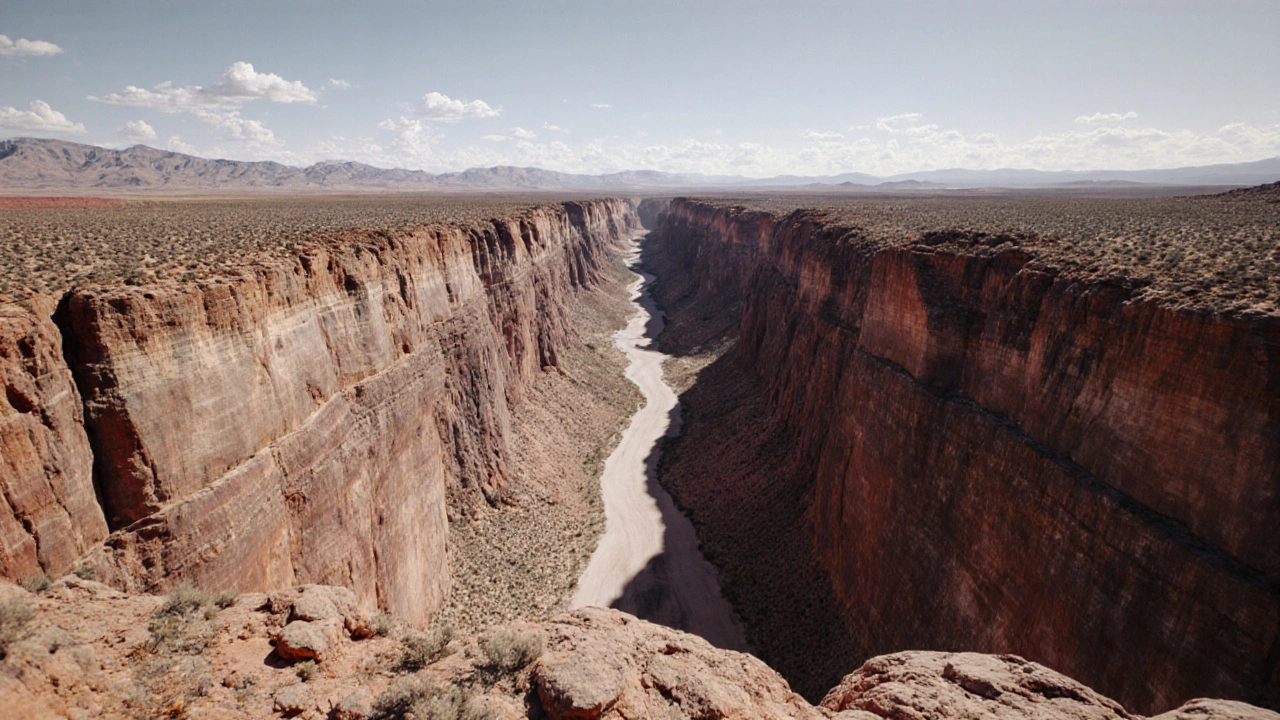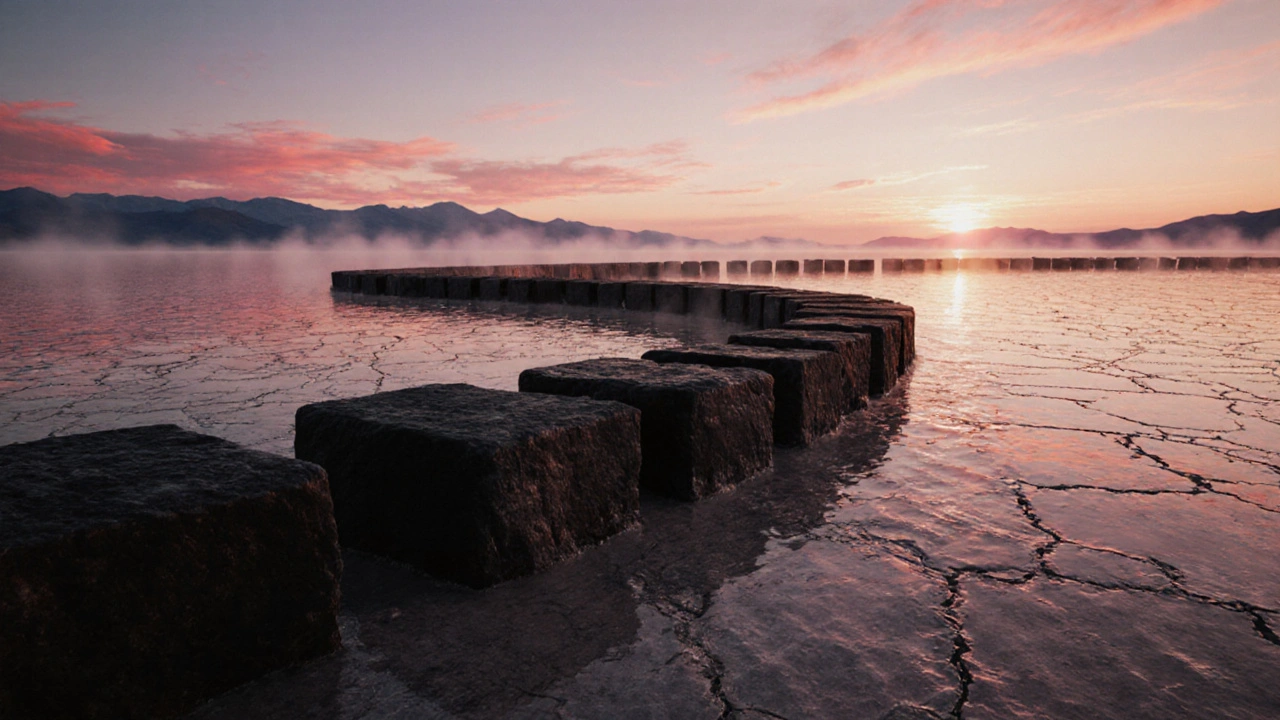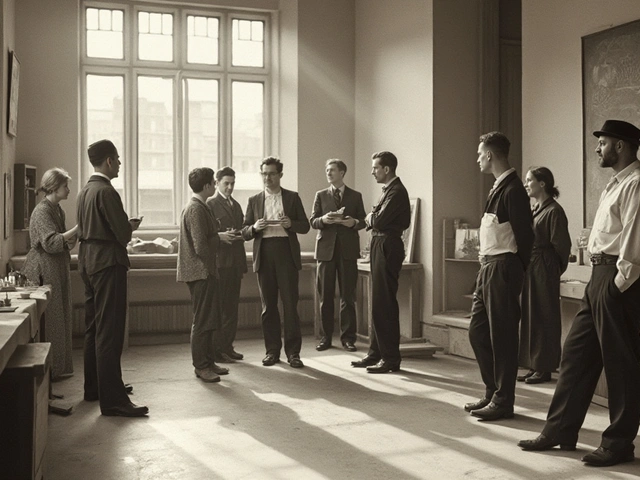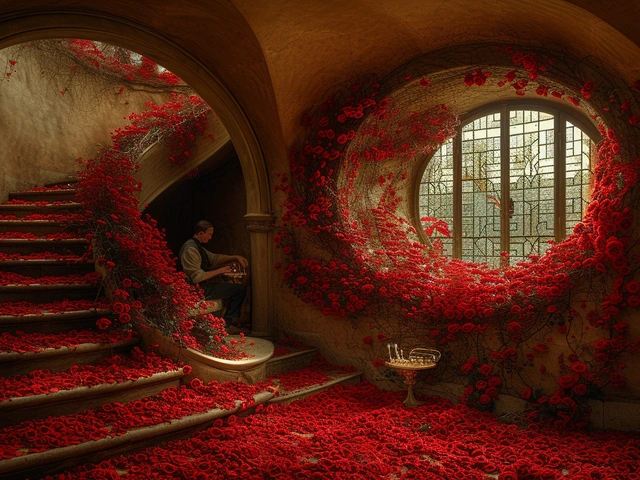Land Art Decay Calculator
Calculate Your Land Art's Lifespan
Select materials and location to estimate how long your earth-based installation will last.
What This Means
Land art exists in the moment and decays as nature reclaims it. This tool shows how environmental factors influence your installation's lifespan.
Remember: Authentic land art follows "Leave No Trace" principles. Only use found materials, avoid disturbing ecosystems, and let nature transform your work.
Land Art Principle
"The artist's role isn't to control nature, but to work with it." - Robert Smithson
Estimated Lifespan
This is a simplified estimate. Actual decay depends on weather, season, and ecosystem factors. Remember: Real land art doesn't need preservation—it's meant to transform with time.
Land art isn’t something you find in a museum. It doesn’t hang on walls or sit under glass. It’s carved into deserts, woven through forests, and shaped by tides. You have to hike, drive, or even fly to see it. And even then, you might miss it-because it’s changing, fading, or gone entirely.
What Land Art Really Is
Land art, also called earthworks, is art made directly from the natural environment. Artists use dirt, rocks, water, plants, and even snow. No canvas. No frame. No gallery. The land itself becomes the medium and the message.
It started in the late 1960s, when artists got tired of the commercial art world. They didn’t want their work bought, sold, or stored. They wanted art that existed in the open, shaped by wind, rain, and time. Robert Smithson’s Spiral Jetty in Utah’s Great Salt Lake is one of the most famous examples. Built in 1970 from 6,650 tons of black basalt and earth, it stretches 1,500 feet into the water. Sometimes it’s submerged. Sometimes it’s exposed. It doesn’t stay the same-and that’s the point.
Unlike traditional sculpture, land art doesn’t aim to last forever. It’s meant to decay. To be reclaimed. To remind us that nature doesn’t care about human timelines.
Why It Transcends Borders
Land art doesn’t need passports. You won’t find customs checkpoints at the entrance to Double Negative by Michael Heizer in Nevada, or The Lightning Field by Walter De Maria in New Mexico. These works exist outside national boundaries-not because they’re ignored by governments, but because they refuse to be owned.
They’re not tied to a single culture. In Japan, artist Kazuo Nakamura built Stone Circle in the mountains of Hokkaido using local basalt. In Australia, Aboriginal artists have been creating earth markings for thousands of years, long before the term "land art" existed. In Iceland, Richard Long walked 100 miles and laid stones in a straight line-his piece, A Line Made by Walking, is as much about presence as it is about form.
These works don’t speak one language. They speak wind, erosion, and season. They’re understood by anyone who’s stood in a field and felt small. That’s why land art connects people across borders-not through politics or profit, but through shared experience.
It’s Not Just Pretty Pictures
People often think land art is about big, Instagrammable shapes. But the best pieces don’t shout. They whisper.
Andy Goldsworthy’s work in Scotland and the Pacific Northwest uses leaves, ice, thorns, and petals. He builds delicate structures and lets nature take them apart. A snowball wrapped in thorns melts in hours. A spiral of maple leaves disintegrates under rain. His art isn’t about permanence-it’s about noticing. About paying attention to the quiet moments between creation and collapse.
That’s why land art is deeply ecological. Many artists work with local materials, avoid heavy machinery, and leave no trace. Some even collaborate with ecologists. In the 1980s, Agnes Denes planted a two-acre wheat field in downtown Manhattan-right between Wall Street and the World Trade Center. She called it Wheatfield - A Confrontation. It grew for three months before being harvested and donated to a food bank. It wasn’t just art. It was a statement about land use, food, and value.

How It Changes How We See Nature
Land art doesn’t romanticize nature. It confronts it.
Before land art, nature was often portrayed as a backdrop-serene, untouched, beautiful. Land art shows nature as active, powerful, and indifferent. Storms reshape it. Tides erase it. Seasons bury it. The artist’s role isn’t to control nature, but to work with it.
That shift changes how we experience the outdoors. Instead of seeing a hill as just a hill, you start to wonder: Did someone shape this? Was this a path? A circle? A message?
People now visit remote locations not just for hiking or photography, but to find art. In the Mojave Desert, visitors hike for hours to see Spiral Jetty. In the Scottish Highlands, people follow trails to find Goldsworthy’s stone cairns. These aren’t tourist attractions-they’re quiet encounters with something bigger than ourselves.
Challenges and Risks
Land art isn’t without problems.
Some pieces are damaged by climate change. Spiral Jetty has been underwater for decades, then visible again. As water levels shift, so does its meaning. In Alaska, permafrost melt is threatening outdoor installations. In coastal areas, rising seas are swallowing works built near shorelines.
There’s also the issue of access. Many land art pieces are on private land, protected areas, or remote public lands. Getting there can require permits, guides, or expensive travel. That makes land art feel exclusive-even though its message is about openness.
And then there’s the risk of commercialization. Some companies now use "land art" as a marketing buzzword-building artificial "art installations" in parks just for photos. These aren’t land art. They’re decoration. Real land art doesn’t need hashtags. It doesn’t need to be shared. It just is.

Where to Find Land Art Today
You don’t need to travel to the desert to experience land art. Look closer.
In Portland, where I live, artists use fallen branches and river stones to create temporary installations along the Willamette River. In New York, the Storm King Art Center has one of the largest outdoor collections, including works by Heizer, De Maria, and Nancy Holt.
Other key sites:
- Desert of Nevada - Michael Heizer’s Double Negative and City (still under construction)
- Northwest Scotland - Andy Goldsworthy’s stone and ice works
- Japan’s Naoshima Island - Integrated land and architecture projects
- South Dakota - The Crazy Horse Memorial, a monumental land sculpture still being carved
- Sweden - The Stones of the Forest by Olafur Eliasson, using glacial rocks
Many of these places don’t have signs. You find them by walking, asking locals, or following trails. That’s part of the experience.
What Land Art Teaches Us
Land art doesn’t ask you to buy it. It doesn’t ask you to understand it. It just asks you to be there.
In a world obsessed with speed, permanence, and ownership, land art is a quiet rebellion. It says: Some things don’t need to last. Some things aren’t meant to be owned. Some beauty exists only in the moment-and that’s enough.
It reminds us that we’re not separate from the earth. We’re part of it. And when we stop trying to control nature, we start seeing it clearly.
Is land art the same as environmental art?
Land art is a type of environmental art, but not all environmental art is land art. Land art specifically uses natural materials and the landscape as the medium. Environmental art can include installations that address pollution, climate change, or conservation-even if they’re made from recycled materials or placed in cities. Land art is rooted in place; environmental art is rooted in message.
Can land art be preserved or restored?
Most land artists intentionally avoid preservation. Robert Smithson believed decay was part of the work. Some sites, like Spiral Jetty, are maintained by foundations to prevent vandalism or erosion from tourism, but they’re not restored to their original state. The goal isn’t to freeze time-it’s to let it move.
Do you need permission to create land art?
Yes, if you’re working on public or protected land. National parks, forests, and tribal lands have strict rules. Many artists work with land trusts or universities to get permits. Some choose remote, unregulated areas-but even then, ethical land artists follow "leave no trace" principles. Never use heavy machinery or remove native plants without permission.
Why isn’t land art more popular in museums?
Museums can’t display land art the way they display paintings. You can’t hang a 1,500-foot rock spiral on a wall. Some museums show photos, maps, or models-but those are records, not the work itself. Land art resists the museum system by design. Its power lies in being out there, not in here.
Can I make my own land art?
Absolutely. Start small. Use stones, leaves, or twigs you find where you are. Build a circle in your backyard, arrange pinecones along a trail, or make a line with sticks by a river. Don’t take anything that’s alive. Don’t disturb the soil. Let it go. The art isn’t in the object-it’s in the act of noticing, creating, and letting go.




